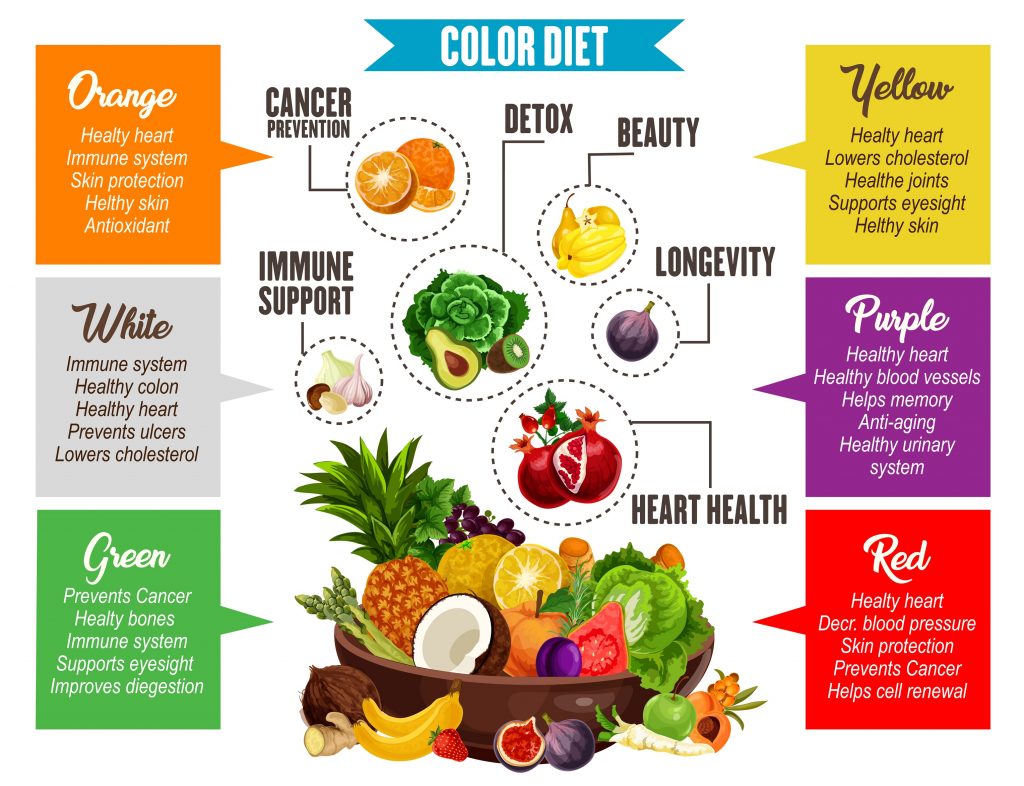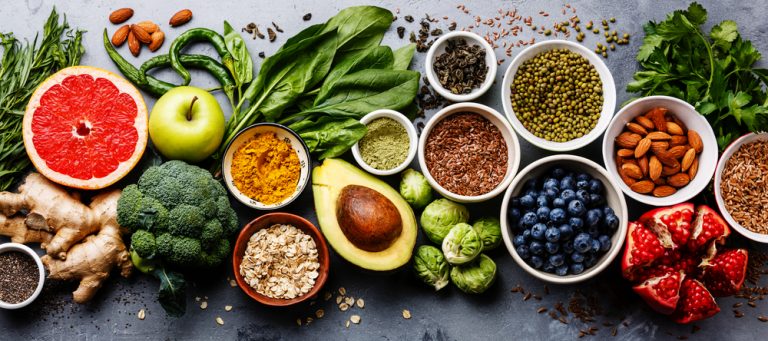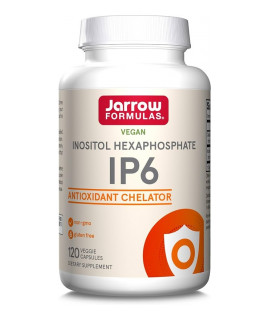We can talk endlessly about the benefits of vegetables and fruits. We should eat them several times a day, taking care of their variety, because they are a source of vitamins, minerals and fibre. You can’t practically overeat fruits and vegetables, but some of them need to be limited. Check how many portions of vegetables and fruits you need to eat in one day.
Vegetables or fruits?
Vegetables and fruits are low in calories and eating them quickly make you feel full. The fibre contained in them protects against constipation, and the minerals help maintain the acid-base balance of the body. Besides, fibre, especially soluble one, limits the absorption of cholesterol, thus preventing negative atherosclerotic changes.
It is also impossible not to mention the antioxidants and vitamins, without which our body cannot stay in homeostasis.
Fruits and vegetables are a source of carbohydrates
Vegetables and fruits are the main sources of carbohydrates (sugars), which - in addition to fat and protein - fuel our body. Some species contain more sugars than others. There are also differences in the rate at which carbohydrates are converted into glucose, a simple sugar that actually enters cells.
The amount and type of carbohydrates determine the calorific value of a given vegetable and its effect on the increase in glucose levels. Vegetables and fruits containing a lot of simple, i.e. easily digestible carbohydrates, cause a rapid increase in blood glucose levels and are more caloric and less desirable as a part of the healthy diet. The excessive glucose level in the blood favours civilization diseases, e.g. diabetes, atherosclerosis or heart attacks.
Eat 5 portions of vegetables and fruits each day
So how to use the benefits of vegetables and fruits without causing spikes in blood glucose levels? It is best to eat them several times a day but in controlled amounts. Nutritionists recommend five servings, i.e. about 600 grams a day.
One serving is a small apple or a medium tomato, 12 grams of salad, a bowl of vegetable soup or small broccoli. If you eat three meals a day, add about 185 g of vegetables and fruits to each one.

Eat more vegetables and fewer fruits
All vegetables and fruits are divided into four groups. Group I and Group II vegetables can be eaten in larger quantities because they are low in carbohydrate and generally low in calories.
Eating vegetables from groups III and IV should be limited. This mainly applies to potatoes. Starch in potatoes is a polysaccharide that quickly transforms into simple sugars in the body. People with elevated blood sugar levels and those already suffering from diabetes should remember about it because due to insulin deficiency it will be difficult to burn the supplied glucose.
Fruits are rich in easily digestible simple carbohydrates. Therefore, their consumption should depend on the number of eaten vegetables with high carbohydrate content. If we limit the consumption of carbohydrate-rich foods (e.g. potatoes, cereal products), we can replace them with an additional portion of fruits from groups I and II. On the other hand, the fruits from groups III and IV should be eaten in small amounts.
Group I with 2-5% carbohydrate content
Chard, broccoli, chicory, cauliflower, cucumber, tomato, radishes, lettuce, spinach, asparagus, watermelons, lemons, grapefruits, melons, wild strawberries, strawberries, cranberries
Group II with 5-10% carbohydrates content
Brussels sprouts, beetroot, onion, pumpkin, kale, green beans, kohlrabi, white, red and Italian cabbage, carrots, peppers, leek, turnips, sorrel, gooseberries, blueberries, peaches, blueberries, cherries, pears, apples, blackberries, raspberries, tangerines, apricots, oranges, white and red currants, cherries
Group III with 10-25% carbohydrates
Broad beans, celery, potatoes, bananas, black currants, plums, green plums, grapes
Group IV with a carbohydrate content of up to 75%
Peas, beans, soybeans, lentils, corn, pineapples, dates, mangoes, dried fruit (plums, apricots, raisins, dates)









